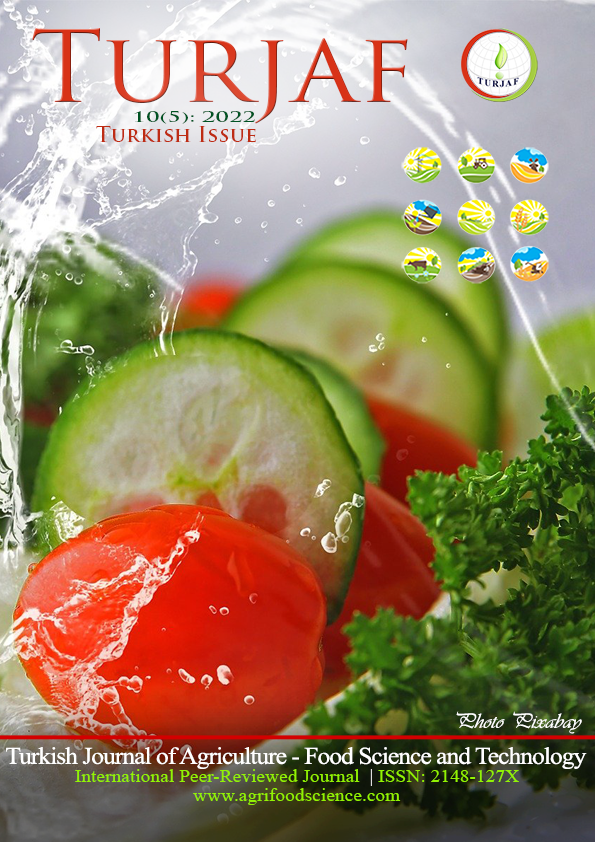Zeytinyağı Üretim Atıklarının Biyolojik Aktiviteleri ve Gıdalarda Kullanım Potansiyeli
DOI:
https://doi.org/10.24925/turjaf.v10i5.798-810.4605Anahtar Kelimeler:
Zeytinyağı atık suyu- prina- biyoaktif bileşik- hidroksitirozol- oleuropeinÖzet
Zeytinyağı üretimi sırasında atık su ve prina olmak üzere iki çeşit atık ortaya çıkmaktadır. Bu atıklar yüksek oranda biyokimyasal ve kimyasal oksijen ihtiyacına sahip oldukları için çevreye zararlı etkileri bulunmaktadır. Ancak, bu zararlarının yanısıra zeytinin içerdiği birçok biyoaktif bileşik yağa işleme sırasında atıklara geçmektedir. Hidroksitirozol, tirozol ve oleuropein hem zeytinyağı atık suyunda hem de prinada baskın olarak bulunan biyoaktif bileşenler olup, bu bileşikler insan sağlığını olumlu etkileyen birçok biyoaktiviteye sahiptir. Yapılan bilimsel araştırmalar sonucunda hidroksitirozol, tirozol ve oleuropein bileşiklerinin insan vücudunda antioksidan aktivite, antienflamatuar etki, kardiyoprotektif etki, nöroprotektif etki, kemoprevansiyon özellik, antidiyabetik etki, antimikrobiyal ve antiviral etki gibi çeşitli biyoaktiviteler gösterdiği kanıtlanmıştır. Bu atıklar içerdikleri biyoaktif bileşenler nedeniyle gıda, kozmetik ve ilaç sektörü gibi çeşitli sektörlerde yeniden değerlendirilmektedir. Atık su ve prinanın içerdiği fenolik bileşikler, pektik polisakkaritler ve lifler sayesinde gıda sektöründe doğal koruyucu, antioksidan, fonksiyonel gıda üretiminde zenginleştirici bileşen, ambalaj materyali şeklinde kullanılabileceği yapılan bilimsel çalışmalarla bildirilmiştir. Bu derlemede zeytinyağı üretim atıkları olan atık su ve prinanın üretim yöntemleri, kimyasal ve biyolojik özelliklerinden bahsedilmiş olup bu atıkların gıda sektöründeki kullanım potansiyelini araştıran çalışmalar derlenmiştir.İndir
Yayınlanmış
2022-05-31
Nasıl Atıf Yapılır
Ede, A., & El, S. N. (2022). Zeytinyağı Üretim Atıklarının Biyolojik Aktiviteleri ve Gıdalarda Kullanım Potansiyeli. Türk Tarım - Gıda Bilim Ve Teknoloji Dergisi, 10(5), 798–810. https://doi.org/10.24925/turjaf.v10i5.798-810.4605
Sayı
Bölüm
Derleme Makale
Lisans
Bu çalışma Creative Commons Attribution-NonCommercial 4.0 International License ile lisanslanmıştır.









